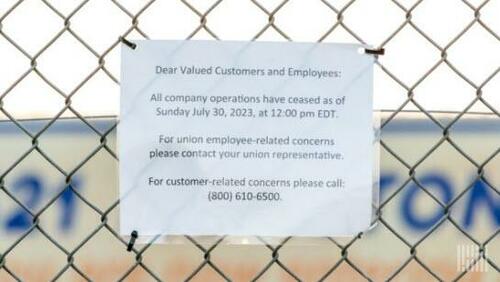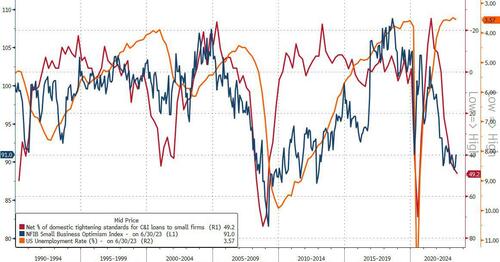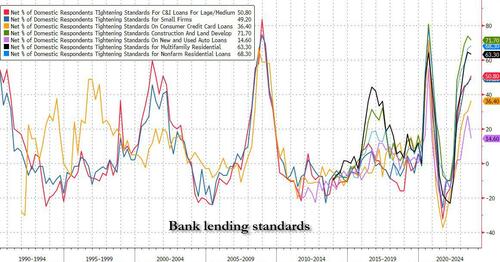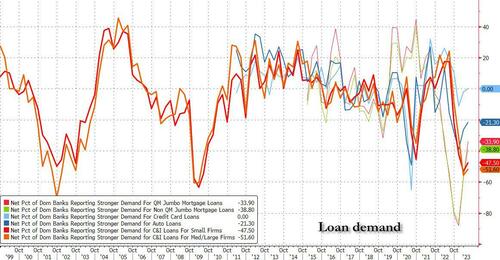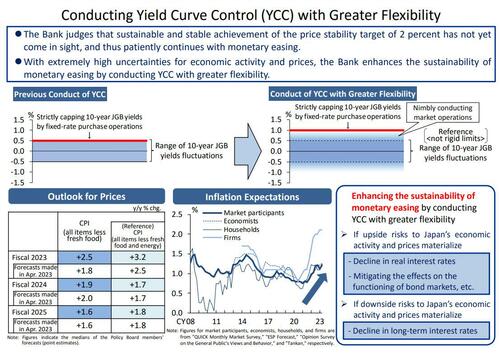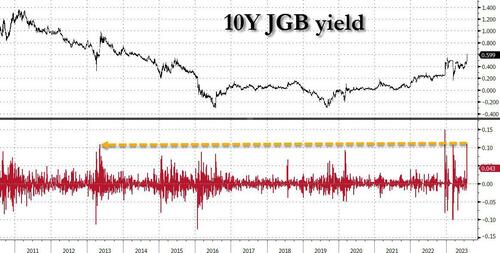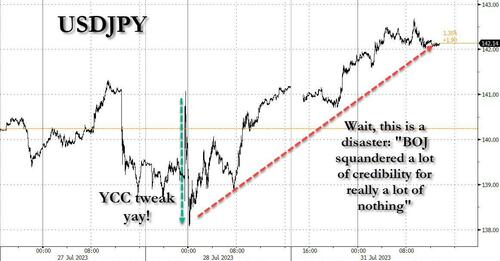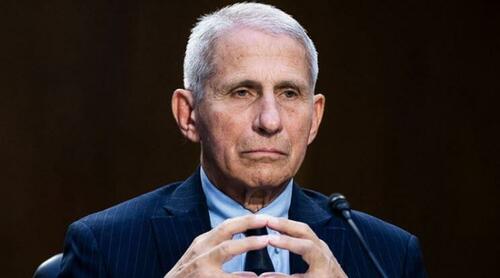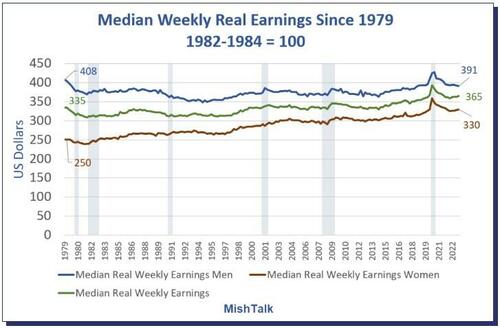As a general rule, Supreme Court Justices speak through their opinions. From time to time, Justices will be “interviewed”by friendly interlocutors during public events. The screened questions are usually softballs, and even then, the Justices tend to avoid saying anything newsworthy. In recent years, perhaps the biggest outlier was Justice Ginsburg. In 2016, she gave an interview with Adam Liptak of the New York Times. RBG made critical comments about then-candidate Trump. Ultimately Ginsburg sort-of apologized, but still faced calls to recuse in certain Trump-related cases. She would not recuse. RBG should have been grateful the Supreme Court Ethics, Recusal, and Transparency Act (SCRET) was not in effect during this final years on the Court.
Speaking of the SCRET Act, on Friday, the Wall Street Journal published a “weekend interview” with Justice Alito. The Justice spoke with the Journal in early July. In April, Alito also spoke with the Journal for “four hours in two wide-ranging sessions” in his chambers. (I wrote about that interview here.) Perhaps the most significant aspect of the interview is that it happened at all. On the current Court, Justice Alito is the member most likely to talk to the press. And he had a lot to say–including about the SCRET Act, and his colleagues. Here are thirteen highlights.
First, Justice Alito repeated his refrain from April that the “bar” is not defending the Court against attack–indeed legal elites are leading the calls that the Court is “illegitimate.”
“I marvel at all the nonsense that has been written about me in the last year,” Justice Samuel Alito says during an early July interview at the Journal’s New York offices. In the face of a political onslaught, he observes, “the traditional idea about how judges and justices should behave is they should be mute” and leave it to others, especially “the organized bar,” to defend them. “But that’s just not happening. And so at a certain point I’ve said to myself, nobody else is going to do this, so I have to defend myself.”
My post in April was titled, “Justice Alito Defends The Supreme Court In Ways Chief Justice Roberts Cannot.” I bet the Chief Justice’s head exploded when he read this interview. But Justice Alito is right. The Chief only speaks out when it serves his interests Again, whenever the Chief Justice speaks of the Court’s “legitimacy,” he is actually speaking about himself–the man cannot separate himself from the Court. No Justice has done more to undermine the Court as a institution that follows law in a dispassionate fashion that Roberts himself. But so long as we avoid 5-4 conservative-liberal splits, he is happy, no matter what the opinion says. (More on Roberts later.)
Second, Justice Alito observed that “‘There are very serious differences'” in how the six conservative justices approach cases.” Well that’s for darn sure.
Justice Thomas does not place much weight on precedent:
Justice Alito says. The simplest difference involves respect for precedent: Justice Thomas “gives less weight to stare decisis than a lot of other justices.” It is, “in its way, a virtue of his jurisprudence,” Justice Alito says. “He sticks to his guns.” . . . The disadvantage of this approach, Justice Alito says, “is that you drop out of the conversation, and . . . lose your ability to help to shape what comes next in the application of that rule.”
Justice Alito is right about this much: it is hard for Justice Thomas to play the game if he insists on eschewing precedent. Then again, is the game worth playing if you have to follow made-up law. Stare decisis does not mean inexorably stare at decisions from the Warren Court.
Third, Justice Alito turned to the third member of the 3-3-3 troika, Justice Gorsuch:
Justice Gorsuch has an ornery streak that has shown itself in cases involving Indian law, crime and discrimination. “He’s definitely not a consequentialist,” Justice Alito says of his colleague—meaning he is less concerned with the real-world effects of following his principles.
An example is Ramos v. Louisiana (2020), which overturned a pair of 1972 precedents and held that the Sixth Amendment’s right to a jury trial requires unanimity for a finding of guilt in state court. Every state but Louisiana and Oregon already required unanimous verdicts, but “Ramos potentially affected many, many criminal convictions that had been obtained . . . using nonunanimous jury verdicts, which had been specifically approved by the Supreme Court,” Justice Alito says. “Overruling those decisions had potentially vast consequences. . . . That was not a big factor in his analysis.”
Spot on. Gorsuch is utterly unconcerned with the consequences of his decisions. Indeed, his unwillingness to even recognize how disruptive his jurisprudence can be leads to decisions like Bostock–could it really be the case that Congress in 1964 enacted a statute that protected against SOGI discrimination? Ditto for Gorsuch on Indian law. Given all the chaos McGirt caused, could his reading of federal law possibly be the right one? Though, I should note that Circuit Justice Gorsuch granted a temporary administrative stay of a Tenth Circuit decision, which held that a member of an Indian tribe was immune from an Tulsa, Oklahoma speeding ticket. I’m not sure if this shadow docket entry counts against his 10-0 pro-tribe record. We’ll see what happens when this stay expires on August 2.
Fourth, Justice Alito turned to the Chief Justice:
As for Chief Justice John Roberts, “he puts a high premium on consensus. He rarely dissents.” He filed no outright dissenting opinions in the 2022-23 term and only one in 2021-22. He also “has expressed a very strong tendency to protect the prerogatives of the judiciary,” as in Bank Markazi v. Peterson (2016). The court upheld a law directing that Iranian assets targeted by successful plaintiffs in a specific terrorism case be seized to pay the judgment. The chief justice dissented against what he called an unacceptable intrusion on judicial power: “Hereafter, with this Court’s seal of approval, Congress can unabashedly pick the winners and losers in particular pending cases.”
For the Chief, voting with the progressives is more important that reaching the best legal conclusion. I’ve long written that the Chief’s judicial lodestar is not the Constitution, but the Gallup Poll. The only issue that gets his dander up is any perceived intrusion about the Judiciary (read John Roberts’s) powers. (More on the SCRET Act later–I’ll get there eventually, I promise).
Fifth, Justice Alito said nothing at all about the judicial philosophies of Justices Barrett or Kavanaugh. I am still not entirely sure what to make of those two. Perhaps Justice Alito is in the same boat.
Sixth, Justice Alito spent very little time on the judicial philosophy of the three progressives:
On the liberal side of the court, by contrast, “I don’t see that there’s a difference in interpretive method,” Justice Alito says.
Seventh, in perhaps a subtle jab at Justices Barrett and Kavanaugh, Justice Alito observed that the Court does not always line up 5-4 or 6-3. But when it does, you know who the Chief Justice persuaded!
Yet he emphasizes that “we don’t always line up 6-3, 5-4, the way some people tend to think. If you look at all the cases, there are cases where the lineup is unusual.” Chief Justice Roberts wrote two election-law decisions this term, Allen v. Milligan and Moore v. Harper, in which he was joined by the three liberals and Justice Kavanaugh, along with Justice Amy Coney Barrett in the latter case.
Then again, I don’t think anyone would think of Allen or Moore as “unusual.” The “unusual” case this term is Pork Producers. Justice Alito explains that he thinks there is a “Dormant” Commerce Clause, unlike Justices Thomas and Alito:
Justice Alito, who agreed with that view, says “it’s no secret that Justice Thomas and Justice Gorsuch don’t think that there is such a thing as the Dormant Commerce Clause.” Justices Barrett, Sonia Sotomayor and Elena Kagan signed on to parts of Justice Gorsuch’s opinion, providing a majority that let the law stand.
“I have not joined Justice Thomas, Justice [Antonin] Scalia, Justice Gorsuch in saying we should get rid of the Dormant Commerce Clause,” Justice Alito says. “I’ve written this in the Tennessee wine case—that the Constitution surely was meant to contain some principle that prevents the balkanization of the economy. That was one of the main reasons for calling the Constitutional Convention in Philadelphia.”
Eighth, Justice Alito turned to his views on history and originalism.
That demonstrates a central feature of Justice Alito’s jurisprudence: its emphasis on historical context. “I think history often tells us what the Constitution means,” he says, “or at least it can tell us what the Constitution doesn’t mean.” His dissent in Obergefell v. Hodges (2015) is a case in point. “It’s perfectly clear that nobody in 1868 thought that the 14th Amendment was going to protect the right to same-sex marriage,” he says. Before this century, “no society—even those that did not have a moral objection to same-sex conduct, like ancient Greece—had recognized same-sex marriage.” The first country to legalize it was the Netherlands, effective in 2001.
Justice Alito has described himself as a pragmatic originalist. In practice, there are probably not that many differences between Justices Alito and Thomas, but in some criminal law cases, where original meaning favors the defendant, Justice Alito may remain skeptical of originalist arguments. Gundy comes to mind. Speaking of Gundy, Justice Alito returned to Justice Gorsuch.
Ninth, Justice Alito addressed Bostock, indirectly at least:
The same attention to history informs Justice Alito’s textualism. “I reject the idea that a statute should be interpreted simply by looking up the words in the dictionary and applying that mechanically,” he says. Justice Gorsuch did something like that in Bostock v. Clayton County (2020), in which the court held that Title VII of the 1964 Civil Rights Act, which prohibits employment discrimination “because of . . . sex,” covers “sexual orientation and gender identity.”
Justice Gorsuch reasoned that because sex is essential to the definition of both categories, such discrimination is “because of” sex. But in 1964 homosexuality was subject to widespread disapprobation, and gender identity “hardly existed as a concept, even among professionals in the field,” as Justice Alito says. “When it’s very clear that the author of the text . . . cannot have meant something, then I don’t think we should adopt that interpretation, even if a purely semantic interpretation of the statute would lead you to a different result.”
I won’t linger on Bostock any further. I’ve already said enough. Let’s see what Justice Gorsuch does if the Court ever grants cert on a Title IX bathroom case–or more precisely, whether Gorsuch would be the fourth vote for cert in such a case. We all know about Kastl now.
Tenth, Justice Alito turned to stare decisis:
Justice Alito’s respect for precedent has limits: “Some decisions—and I think that Roe and Casey fell in this category—are so egregiously wrong, so clearly wrong, that’s a very strong factor in support of overruling.” Those are the 1973 and 1992 abortion cases that Dobbs overturned, with Justice Alito writing for a majority of five. Chief Justice Roberts provided a sixth vote to uphold Mississippi’s 15-week abortion ban but urged “a more measured course” that would narrow the precedents while deferring the question of whether to overturn them altogether.
The Journal pointed out that Alito has favored incrementalism in the past, at least with regard to the path from Harris v. Quinn to Abood.
Justice Alito has been known to take a similarly incremental approach. His opinion for the court in Janus v. Afscme (2018) held that compelling public employees to pay union dues violated the First Amendment, and it overturned a 1977 precedent, Abood v. Detroit Board of Education. A foretaste came in Harris v. Quinn (2014), also written by Justice Alito, which subjected Abood to a withering critique but left it standing.
I suppose the difference is in Janus, Justice Kennedy was the fifth vote, and in Dobbs, Justice Kavanaugh was the fifth vote. Justice Alito admits as much.
“The question how broad a decision should be—should we overrule a prior precedent when we really don’t have to in order to decide this case?—it’s a judgment call,” he says. “There can be reasons for deciding the case more narrowly. Maybe we’re not sure whether it should be overruled. Maybe we think it would be better if the issue were highlighted for others to address first—scholars, lower-court decisions. Maybe it’s a question of what a majority of the court is willing to go along with.“
Eleventh, Justice Alito alluded to Loper Bright Enterprises, indirectly at least:
In the 2023-24 term, the court will consider whether to overturn Chevron v. NRDC (1984), an increasingly disputed precedent that requires courts to defer to administrative agencies’ interpretations of ambiguous statutes. Justice Alito is careful not to state a position on Chevron, but he does make a pertinent broader point about precedent: “I’m not in favor of overruling important decisions just by pretending they don’t exist but refusing to say anything about them.”
A hallmark of the Chief Justice’s jurisprudence is to not formally overrule cases, but to read them in such a way as they are effectively overruled. I agree entirely with Justice Thomas that Grutter v. Bollinger is all-but-overruled. Chevron may meet a similar fate this upcoming term.
Justice Alito suggests that Massachusetts v. EPA may also have been quietly overruled:
He says that’s what his colleagues did last month in U.S. v. Texas, the term’s only case that had him alone in dissent. The court threw out Texas’ challenge to lax Biden administration immigration guidelines on the ground that the state lacked standing to challenge them in court. But Justice Alito says Texas’ claim of injury “was the same as—in fact, stronger than—that of Massachusetts in Massachusetts v. EPA,” a 2007 case that opened the door to federal regulation of greenhouse gases. “The court just hardly said a word about Massachusetts v. EPA.”
I think Massachusetts v. EPA got the Lemon test treatment. Alito also suggests that several of his colleagues ruled against Texas for, let’s say, optical reasons:
The Biden policies suspended all enforcement measures for certain categories of illegal aliens, despite statutory language to the contrary—a clear violation, in Justice Alito’s view, of the president’s express constitutional duty to ensure that the law be faithfully executed. How did all eight of his colleagues end up on the other side? “I have no idea,” he says. “I honestly don’t. Why did it turn out that way? Because it involves immigration? Because it’s vaguely connected to Trump? I don’t know. I don’t know what the explanation is.”
I’m with Alito. In my view, this case was the most perplexing decision of the term.
Twelfth, Justice Alito turned to the pending Supreme Court ethics bill. He offered his opinion that the law would be unconstitutional:
The attacks on the court are sure to keep coming as well. Last week the Senate Judiciary Committee voted along party lines to advance Sen. Sheldon Whitehouse’s Supreme Court Ethics, Recusal and Transparency Act, which purports to impose on the justices and their clerks regulations “at least as rigorous as the House and Senate disclosure rules.”
Justice Alito says he voluntarily follows disclosure statutes that apply to lower-court judges and executive-branch officials; so do the other justices. But he notes that “Congress did not create the Supreme Court”—the Constitution did. “I know this is a controversial view, but I’m willing to say it,” he says. “No provision in the Constitution gives them the authority to regulate the Supreme Court—period.”
Do the other justices agree? “I don’t know that any of my colleagues have spoken about it publicly, so I don’t think I should say. But I think it is something we have all thought about.”
Justice Alito did not spell out his argument with any particularity, but he seems to reject all possible sources of congressional authority–in particular the Necessary and Proper Clause. I would flag Randy Barnett’s work suggesting that a Court packing bill would likewise be beyond Congress’s enumerated powers. Under this analysis, much would turn on what is the real purpose regulating the Court–actual ethics reform, or affecting the substantive outcome of cases by forcing justices to disqualify. (In many regards, the ethics bill would amount to Court unpacking.0
We do know for certain that at least one of Justice Alito’s colleagues thinks there are problems with Congress regulating the Supreme Court. Chief Justice Roberts’s April 2023 letter to Senator Durbin included this line:
Testimony before the Senate Judiciary Committee by the Chief Justice of the United States is exceedingly rare, as one might expect in light of separation of powers concerns and the importance of preserving judicial independence.
At the time, I observed:
Roberts does not even begin to explain what those “separation of powers concerns” are. Nor does he elucidate why testifying would weaken “judicial independence.” To play devil’s advocate for a moment, Roberts would be under no obligation to talk about any case or controversy. And, with lifetime tenure and guaranteed salary, the Senators cannot actually do anything that would affect Roberts’s ability to decide cases. The Senate could defund the Court, turn off the lights, eliminate law clerks, and so on, but those remedies are unlikely. Roberts’s conclusory statements are not self-evident.
More than a decade ago, Chief Justice Roberts offered what I described as an “advisory opinion” about whether Congress could regulate the Supreme Court:
The Code of Conduct, by its express terms, applies only to lower federal court judges. That reflects a fundamental difference between the Supreme Court and the other federal courts. Article III of the Constitution creates only one court, the Supreme Court of the United States, but it empowers Congress to establish additional lower federal courts that the Framers knew the country would need. Congress instituted the Judicial Conference for the benefit of the courts it had created. Because the Judicial Conference is an instrument for the management of the lower federal courts, its committees have no mandate to prescribe rules or standards for any other body.
The Constitution arguably created the Supreme Court–this issue is not as simple as the Chief Justice suggests–but the Constitution did not create the members of the Supreme Court. The seat that Chief Justice Roberts holds was the same seat the John Jay held, which was established by an act of Congress. If the ethics bill is unconstitutional, the answer lies in Article I, and not in Article III alone.
Thirteenth, and finally, Justice Alito turns to massive resistance:
Justice Alito wonders if outright defiance may be in the offing for the first time since the aftermath of Brown v. Board of Education (1954): “If we’re viewed as illegitimate, then disregard of our decisions becomes more acceptable and more popular. So you can have a revival of the massive resistance that occurred in the South after Brown.”
Will the justices’ recent rulings endure? The court shows little sign of yielding to external pressure, but its three liberal members stand ready to overturn many recent precedents from which they dissented. Whether they’ll have the opportunity likely depends on who holds the White House and the Senate when future high-court vacancies arise. About that prospect, Justice Alito demurs: “We are very bad political pundits.”
I think many of the post-Bruen laws have amounted to resistance. I think we will see much the same in the wake of Students for Fair Admission. If you keep calling the Court illegitimate, then there is no reason to respect its decision.
The post Justice Alito's Interview in the <i>Wall Street Journal</i> appeared first on Reason.com.
from Latest https://ift.tt/Yulreg4
via IFTTT


